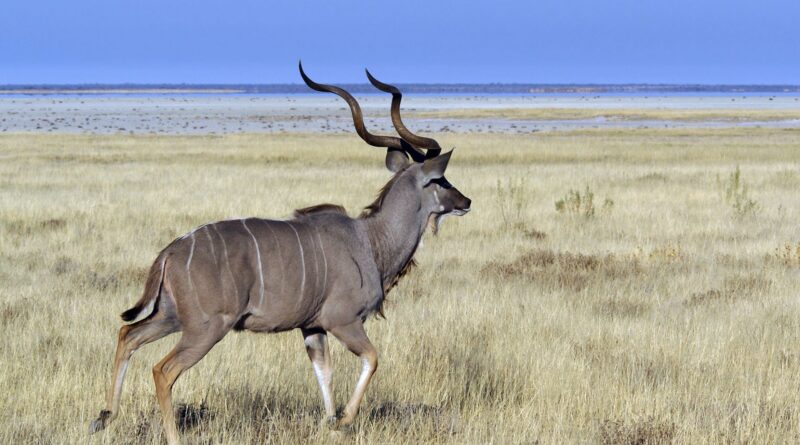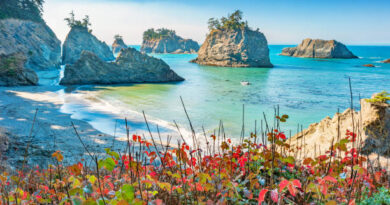Lochinvar National Park: A Jewel of Zambia’s Wilderness
Nestled in the heart of Zambia, Lochinvar National Park stands as a testament to the country’s dedication to preserving its natural heritage. Spread across approximately 428 square kilometers (165 square miles), this pristine wilderness area is a sanctuary for an abundance of wildlife, diverse ecosystems, and breathtaking landscapes. From its expansive floodplains to its shimmering wetlands, Lochinvar offers visitors an unparalleled safari experience that is both immersive and unforgettable.
History and Conservation
Established in 1972, Lochinvar National Park was named after the Lochinvar estate in Scotland, echoing Zambia’s colonial heritage. The park was created primarily to protect the significant wetlands and floodplains of the Kafue River Basin, which provide vital habitat for a myriad of wildlife species, including numerous migratory birds.
Lochinvar’s status as a Ramsar Wetland of International Importance underscores its global significance in wetland conservation. The Ramsar designation highlights the park’s crucial role in preserving biodiversity and maintaining ecological balance, particularly within the Kafue Flats ecosystem.
Geography and Ecosystems
Lochinvar National Park is characterized by its diverse landscapes, shaped by the meandering Kafue River and its seasonal fluctuations. The park encompasses vast floodplains, marshes, grasslands, and woodlands, each supporting a unique array of flora and fauna.
The Kafue Flats, a vast expanse of grassy floodplains, dominate the park’s landscape during the wet season, attracting an extraordinary concentration of wildlife. These floodplains are renowned for their seasonal inundation, which sustains an abundance of aquatic plants and grasses, providing essential forage for herbivores such as lechwe, buffalo, and elephants.
The park’s wetlands serve as vital breeding grounds and feeding areas for an impressive diversity of bird species, including herons, egrets, storks, and the iconic wattled crane. Lochinvar’s avian residents and migratory visitors make it a paradise for birdwatchers and ornithologists alike.
Wildlife
Lochinvar National Park boasts a rich tapestry of wildlife, with over 350 bird species and a plethora of mammalian, reptilian, and amphibian inhabitants. Among the park’s flagship species are the Kafue lechwe, a unique antelope adapted to the wetland environment, and the ubiquitous African elephant, which roams the floodplains in search of sustenance.
Other notable mammals found within Lochinvar include buffalo, zebra, hippopotamus, and predators such as lion, leopard, and spotted hyena. The park’s diverse habitats support a variety of smaller mammals, including mongoose, serval, and genet.
In addition to its terrestrial inhabitants, Lochinvar National Park is home to an impressive array of reptiles and amphibians, including Nile crocodiles, monitor lizards, and numerous frog species. The park’s waterways teem with aquatic life, sustaining populations of fish and crustaceans vital to the ecosystem’s health.
Safari and Activities
Exploring Lochinvar National Park offers visitors a myriad of safari experiences, from traditional game drives to guided walking safaris and boat excursions along the Kafue River. The park’s diverse landscapes and abundant wildlife ensure that every safari adventure is unique and memorable.
Game drives through the park’s grassy plains and woodlands provide excellent opportunities to encounter a variety of wildlife, including herds of lechwe grazing in the floodplains, majestic elephants browsing along the riverbanks, and predators prowling in search of prey.
For bird enthusiasts, Lochinvar’s wetlands and riverine habitats offer unparalleled birdwatching opportunities. Guided birding tours allow visitors to observe a vast array of avian species in their natural environment, from colorful kingfishers and majestic raptors to rare and elusive waterfowl.
Boat safaris along the Kafue River provide a different perspective of the park, allowing visitors to navigate through winding channels and explore inaccessible areas teeming with wildlife. Sunset cruises offer a tranquil and scenic way to experience Lochinvar’s beauty while observing the park’s diverse wildlife as they come to the river to drink and graze.
Conservation Challenges and Efforts
Despite its protected status, Lochinvar National Park faces numerous conservation challenges, including habitat loss, poaching, and human-wildlife conflict. The expansion of agricultural activities and infrastructure development in surrounding areas threatens the park’s ecological integrity and disrupts critical wildlife corridors.
Poaching, particularly of large mammals such as elephants and buffalo, remains a significant concern within the park, driven by demand for ivory and bushmeat. Efforts to combat poaching and mitigate human-wildlife conflict are ongoing, with increased emphasis on community engagement, law enforcement, and conservation education.
Zambia’s Department of National Parks and Wildlife, in collaboration with international conservation organizations and local communities, is actively involved in initiatives aimed at safeguarding Lochinvar’s natural resources and promoting sustainable ecotourism.
Conclusion
Lochinvar National Park stands as a testament to Zambia’s commitment to conserving its natural heritage and promoting sustainable tourism. From its expansive floodplains to its teeming wetlands, Lochinvar offers visitors an immersive safari experience amidst breathtaking landscapes and diverse wildlife.
As a haven for migratory birds, iconic mammals, and myriad other inhabitants, Lochinvar National Park holds immense ecological significance and serves as a vital sanctuary for biodiversity in the heart of Africa. By preserving and protecting this wilderness gem, Zambia ensures that future generations can continue to marvel at the wonders of Lochinvar’s natural splendor.




